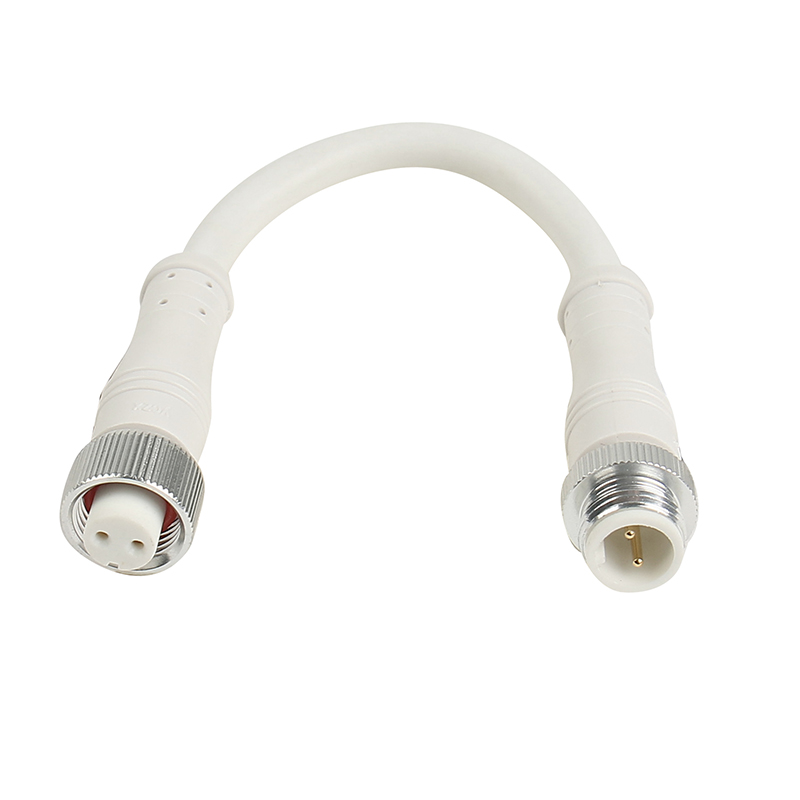News


News

12V 2-Pin Waterproof Connectors: Top FAQs and Pro Solutions
Release time:2025-04-10
viewed:278
12V 2-pin waterproof connectors are the go-to choice for low-voltage systems in cars, boats, solar setups, and outdoor gear. But even these rugged connectors face challenges—corrosion, water ingress, and faulty connections can ruin your project. In this article, we answer the most common questions about 12V 2-pin waterproof connectors and share fixes to keep your devices running smoothly.

The Short Answer: Yes—if you choose the right IP rating.
IP67 vs. IP68:
IP67: Handles temporary submersion (up to 1m for 30 mins). Ideal for marine bilge pumps or outdoor LED strips.
IP68: Survives deeper/longer submersion (e.g., underwater lights in ponds).
Pro Tip: For saltwater use, pick connectors with 316 stainless steel shells and epoxy-filled terminals.
The Issue: Overheating stems from two culprits:
Poor Contact Resistance: Corroded or dirty pins increase resistance, causing heat buildup.
Overloading: Exceeding the connector’s current rating (e.g., using a 5A connector for a 10A load).
The Fix:
Clean Contacts: Scrub pins with isopropyl alcohol and a toothbrush.
Upgrade Connectors: Use silver-plated pins rated for 10A+ continuous current.
The Science: Corrosion happens when moisture meets metal. Solutions include:
Dielectric Grease: Slather it on pins to block water and oxygen.
Gold-Plated Pins: Resist oxidation better than tin or nickel.
Sealed Backshells: Use heat-shrink tubing with adhesive lining over wire exits.
Case Study: A boat owner eliminated corrosion issues by switching to gold-plated 12V connectors and applying grease annually.
Yes, But Follow These Rules:
Vibration Resistance: Choose connectors with spring-loaded contacts (e.g., Deutsch DT series) for engine bays.
Saltwater Proofing: Opt for IP68-rated connectors with marine-grade tinned copper wires.
DIY Hack: Wrap connections in self-amalgamating tape for extra abrasion resistance.
Hidden Causes:
Loose Crimps: Poorly crimped terminals cause arcing and signal loss.
Broken Strands: Wires flexing at the connector neck can snap over time.
The Fix:
Re-Crimp: Use a ratcheting crimper for insulated terminals.
Add Strain Relief: Secure cables with nylon sleeves or zip ties.
Emergency Solutions:
Silicone Sealant: Inject non-conductive silicone into the connector shell.
Heat-Shrink Tubing: Slide adhesive-lined tubing over the entire connector and shrink with a heat gun.
Pro Tip: These are temporary fixes—replace with IP-rated connectors ASAP.
Step-by-Step:
Power Off: Always disconnect the 12V source first.
Align and Push: Match keyed slots (if any) and push firmly until the lock clicks.
Twist to Unlock: For threaded connectors, unscrew gently to avoid stripping.
Lifespan Factors:
Environment: Saltwater and UV exposure shorten life.
Usage: Frequent plug/unplug cycles wear out seals.
Typical Lifespan:
Industrial Grade: 5–10 years (e.g., Molex MLX series).
Consumer Grade: 2–3 years (replace O-rings annually).
Monthly: Inspect seals for cracks; wipe dirt off shells.
Annually: Replace O-rings and reapply dielectric grease.
After Flooding: Disassemble, dry, and test resistance with a multimeter
12V 2-pin waterproof connectors are simple but critical—mess them up, and your project sinks (literally). By choosing IP68-rated connectors, maintaining seals, and avoiding overloads, you’ll ensure years of reliable service.